
Coyotes are being spotted in many urban areas in North America and look very similar to German Shepherds. So how do we know whether the animal walking down the street or into our backyard is a Coyote or a German Shepherd? And do we need to be concerned if it is a Coyote?
Despite their close resemblance, there are differences distinguishing German Shepherds from Coyotes. Coyotes are smaller and sleeker, with longer, narrower snouts, wide-set pointed ears, and bushier tails carried low to the ground. German Shepherds are usually black and tan, colors that do not appear in Coyotes.
Both these animals belong in the same dog lineage or Canidae family, and both bear a resemblance to wolves. The German Shepherd is considered the closest dog breed to the Coyote in appearance. It’s fascinating to explore how the domesticated German Shepherd differs from his wild cousin despite the similarities.
Table of Contents
- Physical differences between Coyotes and German Shepherds
- Are Coyotes dangerous compared to German Shepherds?
- Coyote
- German Shepherd
- Tips to avoid contact with Coyotes
- Conclusion
Physical differences between Coyotes and German Shepherds
Appearance
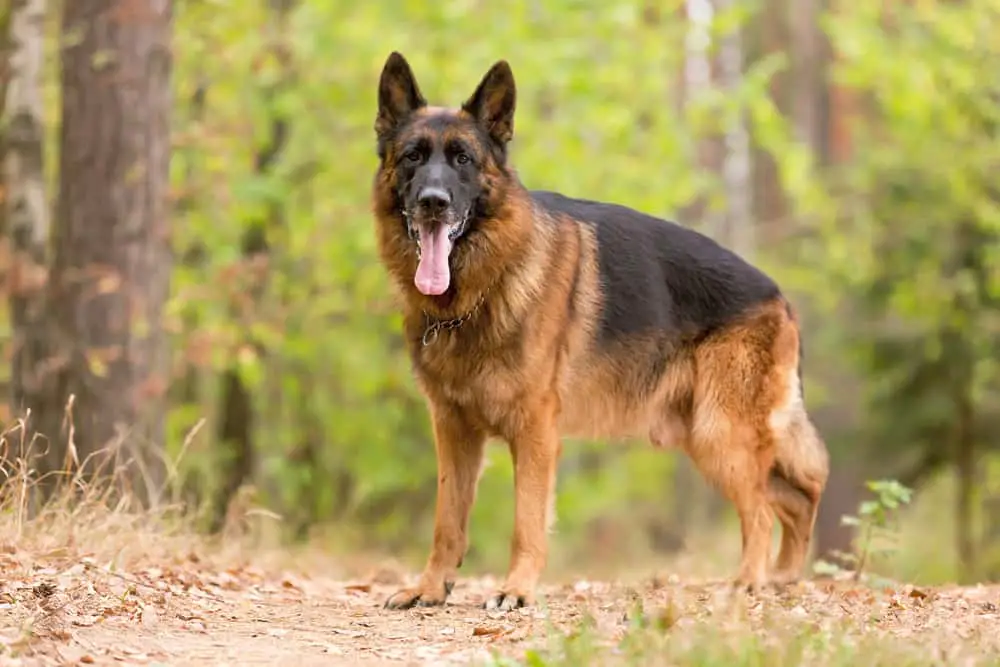
German Shepherds are large, strong dogs. Their bodies are long (between 22 and 26 inches) in proportion to their height, emphasizing their muscular build. Their ears are erect and set high on their heads. The Coyote has a long, tapered snout, wide-set pointed ears, and yellow eyes. It has slender legs and small feet.
Size
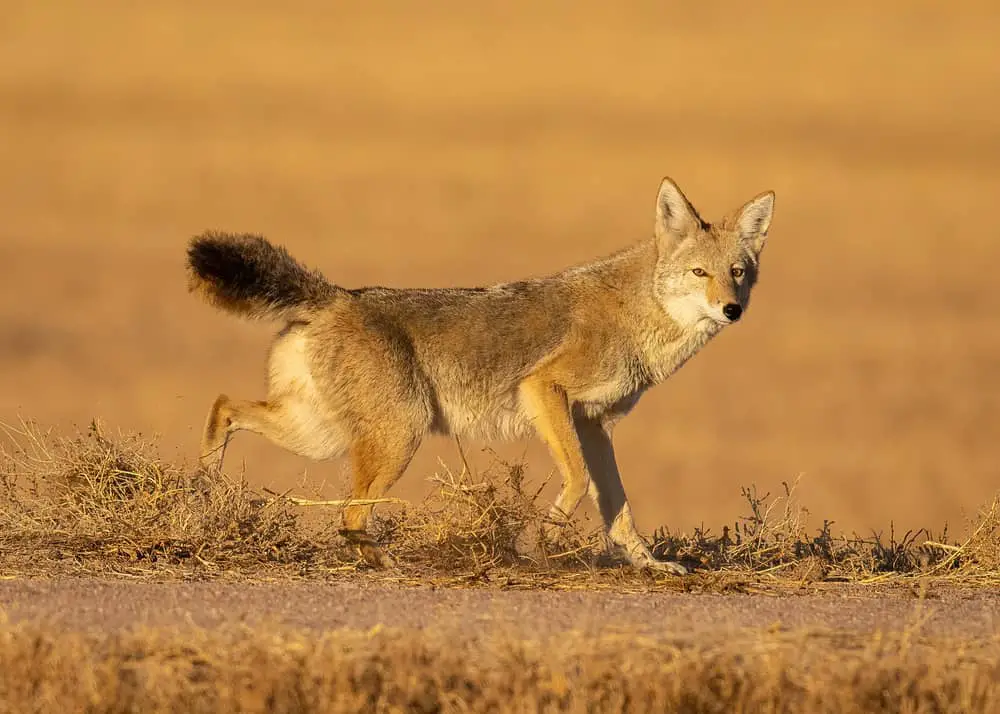
German Shepherds are larger than Coyotes. The average weight of a fully grown German Shepherd ranges from 50 to 90 pounds. By comparison, Coyotes have sleeker, leaner bodies. The Coyotes’ average weight is 15 to 50 pounds. Some people say they look like thin, hungry dogs.
Color
German Shepherds are usually black and tan. Other less common colorings are all-white, all-black, black and red, black and silver, gray, blue, and liver. Coyotes are usually silver, grayish-brown with reddish tinges behind the ears and around the face. The Coyote’s belly is usually covered in white fur.
Tails
German Shepherds have long tails with a slight curvature. When they are excited, their tails curve more distinctively. They tend to lift their tails when they trot or walk. The Coyote has a straight bushy tail carried low to the ground, especially when on the move.
Length of legs and “elbow” joints
The “elbow” joints of the German Shepherd are above the chest line. The “elbow” joints of Coyotes are below the chest line making their legs appear longer than those of German Shepherds, although this is not in fact the case.
Pawprints
With a German Shepherd, the prints of all four paws can clearly be seen. Coyotes leave fewer prints. The hind paw prints of the Coyote are usually obscured by or are partly on top of, the forepaw prints.
“Next time you think you see a Coyote, try to get a good view of the ears, the snout, and the front legs. If you see wide-set, pointed ears; a narrow snout; and elbow joints below the chest line, you can confidently say that you have spotted a coyote. “
Are Coyotes dangerous compared to German Shepherds?
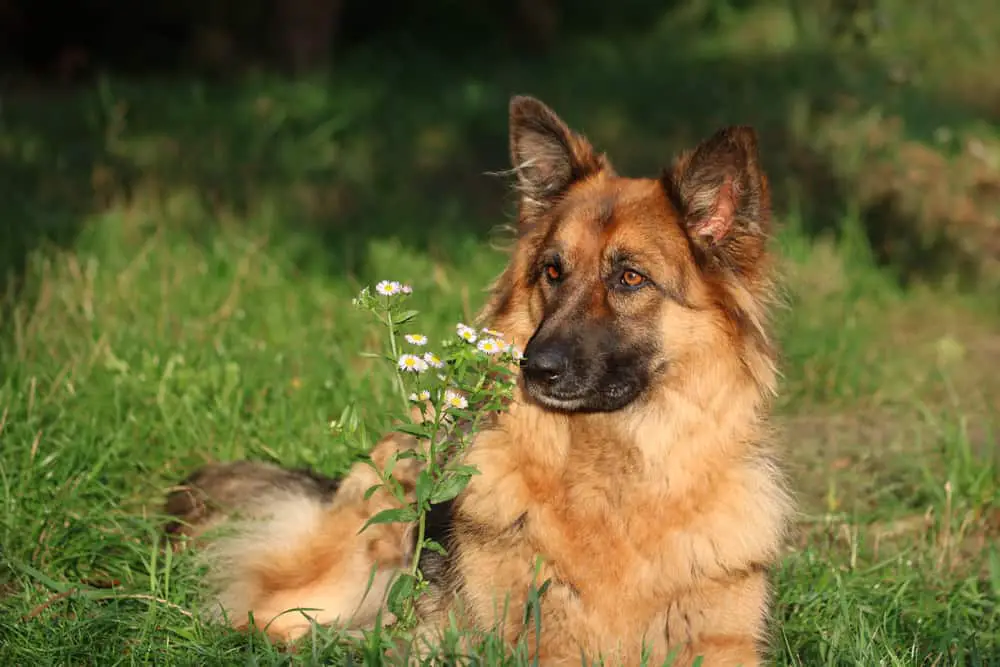
A properly trained, well-cared-for German Shepherd does not pose a danger to humans or other animals. However, German Shepherds used in police and military work are trained to attack suspected criminals or enemy targets. Because of their strength and speed, German Shepherds are, for example, very successful at chasing and holding suspects who are running away from law enforcement.
Coyotes, on the other hand, are wild members of the dog family. They have never been domesticated. As human settlements expand, Coyote and human territory increasingly merge, forcing them to cohabit with humans.
Unlike German Shepherds, Coyotes have to hunt for their food. Their diet in the wild includes small animals like rabbits, shrews, and mice. So if they are roaming in a suburb, they may hunt pets such as cats and small dogs because these animals are similar to their natural prey.
In the past, Coyotes tended to shy away from humans, but this is changing. “Coyotes are losing their fear of humans, which is further worsened by people intentionally or unintentionally feeding coyotes. In such situations, some coyotes have begun to act aggressively toward humans, chasing joggers and bicyclists, confronting people walking their dogs, and stalking small children.”
What to do if confronted by a Coyote or a German Shepherd
There are similarities and differences in what to do if confronted by either of these animals. Some of the actions that will ward off attacks by Coyotes are the very ones that will provoke German Shepherds.
Coyote
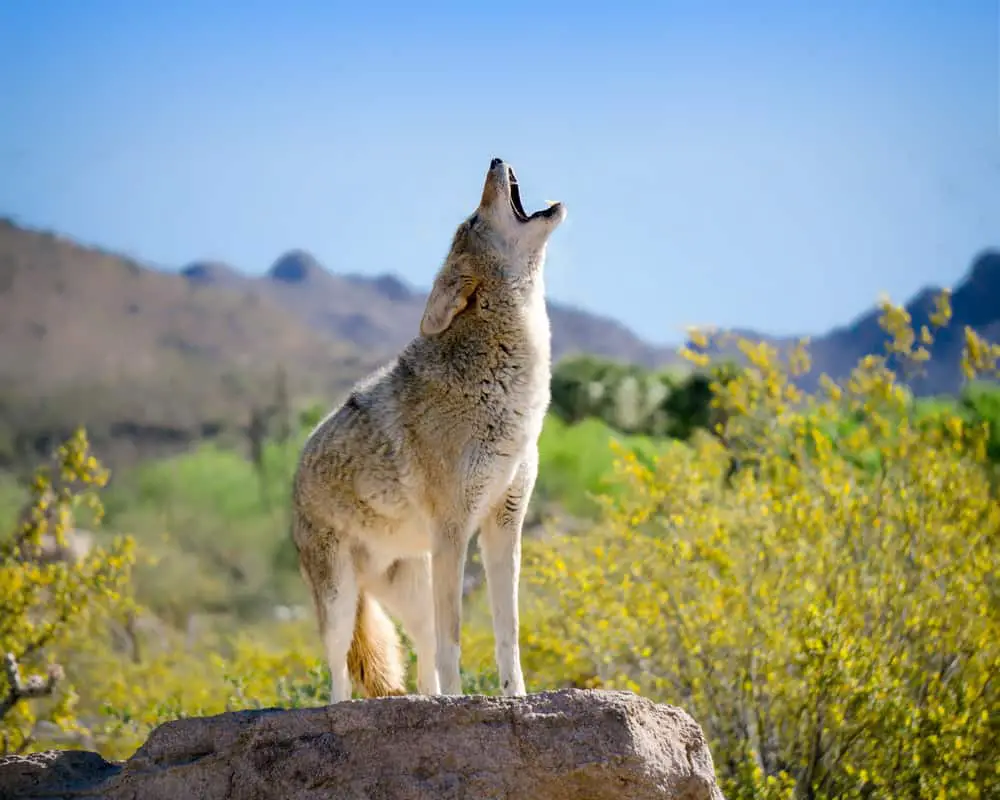
- Never get near to or try to pat a Coyote, as this could trigger aggression.
- Don’t turn away and run. This could elicit the predator instinct in the animal and make him chase after you.
- Respond aggressively, making yourself look bigger by, e.g., waving your arms overhead.
- Clap your hands loudly and firmly
- Shout in a deep voice.
- Throw rocks, sticks, or other objects on hand to scare it away.
- If the Coyote refuses to leave, it could be because its pups are close or because there’s food nearby. If so, back away slowly.
German Shepherd
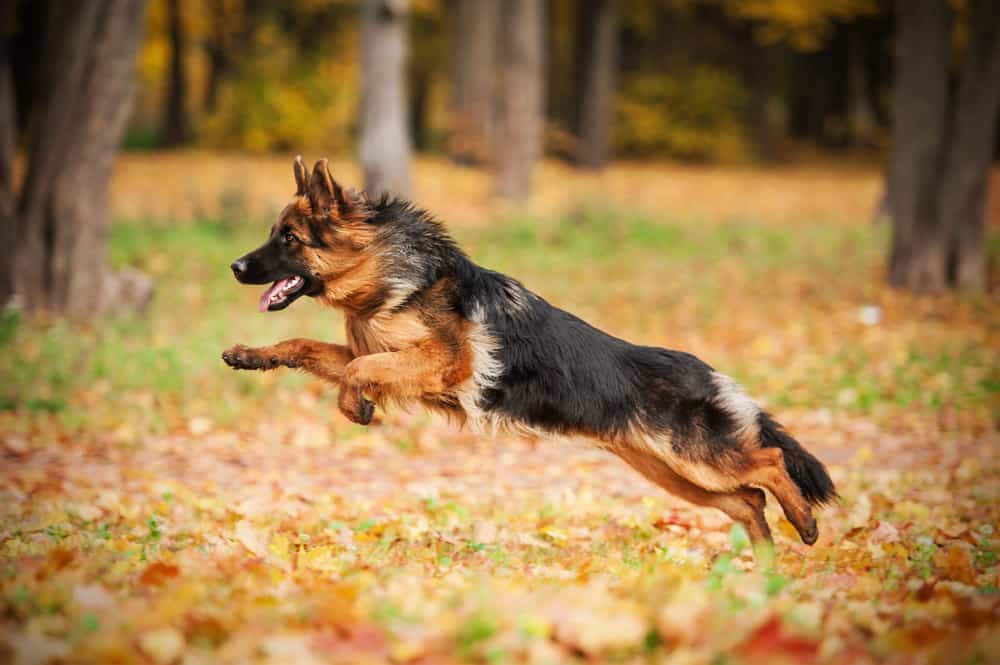
- Don’t make eye contact with the dog because this will be interpreted as an aggressive act.
- Stay calm. The dog senses your emotions, and the more upset you become, the more stressed he will become.
- Don’t run away. Fast movement will prompt the dog to chase you.
- Stay quiet. Don’t shout or scream, as that will aggravate the dog.
- Slowly move behind a barrier such as a wall or a table to get something between you and the dog.
- Shield yourself by holding a flat object like a briefcase close to you if there’s no barrier nearby. If the surface is hard and flat, the dog will stop biting it. If you don’t have a flat object, use anything you have (e.g., a shopping bag) for the dog’s jaws to latch on to.
- If the dog slams you down onto the ground, curl up in a ball and use your arms to protect your neck and head. If you remain quiet without moving, the dog may lose interest.
Tips to avoid contact with Coyotes
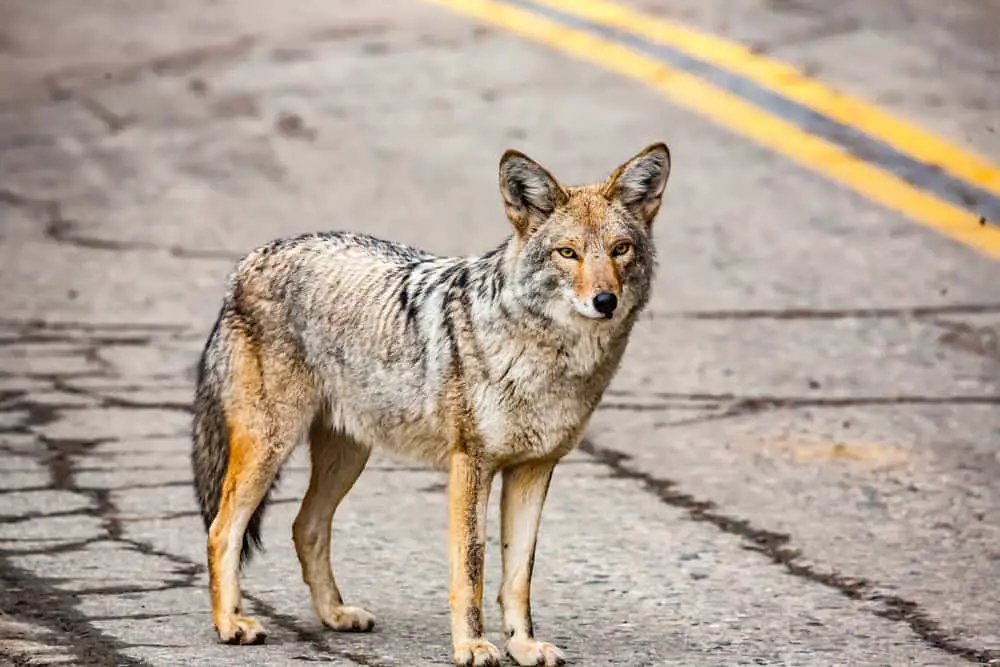
“Coyotes …are opportunistic feeders. They will feed on whatever is most readily available and easy to obtain. Their primary foods are fruits, berries, rodents, and insects. They will scavenge on animal remains as well as garbage and pet foods left outdoors. In suburban areas, they have been known to prey on unprotected pets. Everything a coyote does is related to a potential meal.”
- Keep all food that could attract Coyotes away from them. This means:
- don’t leave small pets unattended outside your home;
- keep your pets’ food bowls inside your home;
- make sure Coyotes can’t overturn your garbage bins or rip open trash bags;
- pick up any fruit that’s fallen from your fruit trees;
- secure rabbit hutches and chicken coops properly with strong wire.
- Don’t feed Coyotes, as this makes them less afraid of humans.
- You can actively discourage Coyotes with loud noises, flashing lights, human voices from a TV or radio, and ammonia-soaked rags.
Conclusion
As our settlements expand into areas where the Coyotes could once roam freely, we will hopefully learn to coexist peacefully, and not be threatened by them. While they will never fulfill the role German Shepherds do as one of our most intelligent and loyal best friends, at least they should not become our enemies.
References:
Native Animal Rescue: Living with California Coyotes
NWCA: Was That a Coyote? How to Tell a Coyote from a Dog
All Shepherd: German Shepherd vs. Coyote
Edmonton: What to Do if You Encounter a Coyote
ASPCA Pet Health Insurance: Facts About German Shepherds
NYK Daily: Legs and Elbows: How to Tell a Coyote From a Dog?



